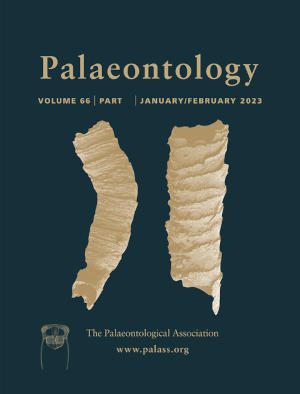Article: Quantitative ichnology: a novel framework to determine the producers of locomotory trace fossils with the ichnogenus Gordia as a case study
Publication: Palaeontology
Volume:
66
Part:
6
Publication Date:
2023
Article number:
e12686
Author(s):
Zekun Wang, and Imran A. Rahman
Abstract
Abstract Trace fossils record the interactions between organisms and their surroundings, and can therefore provide unique insights into the coevolution of trace makers and the environment. However, identifying the producers of trace fossils is challenging because different animals can create very similar traces and many ichnotaxa can therefore only be attributed to broad morphological grades. For example, simple horizontal traces like Gordia are generally suggested to have been produced by vermiform organisms, potentially encompassing a range of animal phyla. This uncertainty makes it difficult to decipher their palaeobiological significance through major evolutionary events and episodes of environmental change. We have developed new mathematical approaches for identifying previously unrecognized signatures left by the trace makers of simple marine locomotory traces. We calculated the deviation angle series of self-crossing traces made by extant isopods, polychaetes, gastropods and nematodes, computing the frequency spectrum and autocorrelation function in each case. The results reveal that each of these taxa left unique markers during the trace-making process, reflecting differences in their anatomy and locomotory behaviour. We were able to identify the possible trace makers of several early Palaeozoic Gordia specimens, demonstrating that ichnospecies within the same ichnogenus can be created by distantly related animals with very different morphologies and/or behaviours. This novel mathematical framework has great potential for identifying the possible producers of diverse trace fossils through deep time, helping to uncover the earliest evidence of certain animals or behaviours. It also has great potential for quantifying ichnotaxonomy, consolidating the link between ichnology and palaeobiology.
